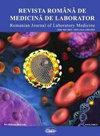The Role of procollagen type 1 amino-terminal propertied (P1NP) Cytochrome P450 (CYPs) and Osteoprotegerin (OPG) as Potential Bone function markers in Prostate Cancer Bone Metastasis
IF 0.5
4区 医学
Q4 MEDICINE, RESEARCH & EXPERIMENTAL
引用次数: 0
Abstract
Abstract Background: Procollagen type I amino-terminal propeptide (PINP) is often present during osteoblast development and could be a biomarker of early bone development. Osteoprotegerin (OPG) may protect tumor cells from apoptosis. Cytochrome P450 enzymes help tumor development and treatment (CYPs). Cytochrome P450 activates and deactivates anticancer drugs and procarcinogens. Objective: The study examined the amounts of a diagnostic marker of bone formation, the amino terminal propeptide of type I procollagen (PINP), Osteoprotegerin (OPG), and P450, in prostate cancer patients at different stages and its ability to detect osteoblastic metastases. Methods: ELISA was used to measure PINP, OPG, and P450 levels in 30 prostate cancer patients. (n = 32) and healthy men’s serum (n = 36). Results: Prostate cancer patients had higher blood levels of PINP, OPG, and P450 than healthy persons (301.3±134.9, 980±467.2, and 84.2±28.4 pg/mL, respectively). Compared to I+II prostate cancer patients, III+IV patients showed higher serum PINP, OPG, and P450 levels (P 0.001). OPG, P450, and PINP had statistically significant Area under the ROC curve (0.9467, P= 0.0001, 0.91, P= 0.0001, and 0.6977, P= 0.4035) in prostate cancer patients. Conclusions: Metastatic prostate cancer patients had greater PINP, OPG, and P450 levels, according to our findings. PINP, OPG, and P450 levels may affect prostate cancer progression. These findings imply that serum PINP, OPG, and P450 levels may predict and diagnose prostate cancer.前胶原1型氨基末端特性(P1NP)、细胞色素P450 (CYPs)和骨保护素(OPG)作为潜在骨功能标志物在前列腺癌骨转移中的作用
背景:前胶原I型氨基末端前肽(PINP)常存在于成骨细胞发育过程中,可能是早期骨发育的生物标志物。骨保护素(OPG)对肿瘤细胞凋亡具有保护作用。细胞色素P450酶有助于肿瘤的发展和治疗(CYPs)。细胞色素P450可以激活和抑制抗癌药物和致癌物原。目的:研究不同分期前列腺癌患者骨形成诊断标志物I型前胶原氨基末端前肽(PINP)、骨保护素(OPG)和P450的含量及其对成骨细胞转移的检测能力。方法:采用ELISA法测定30例前列腺癌患者的PINP、OPG、P450水平。(n = 32)和健康男性血清(n = 36)。结果:前列腺癌患者血中PINP、OPG、P450水平均高于健康人(分别为301.3±134.9、980±467.2、84.2±28.4 pg/mL)。与I+II前列腺癌患者相比,III+IV前列腺癌患者血清PINP、OPG和P450水平较高(P < 0.001)。前列腺癌患者的OPG、P450、PINP的ROC曲线下面积(0.9467,P= 0.0001、0.91、P= 0.0001、0.6977,P= 0.4035)具有统计学意义。结论:根据我们的研究结果,转移性前列腺癌患者有更高的PINP、OPG和P450水平。PINP、OPG和P450水平可能影响前列腺癌的进展。这些发现提示血清PINP、OPG和P450水平可以预测和诊断前列腺癌。
本文章由计算机程序翻译,如有差异,请以英文原文为准。
求助全文
约1分钟内获得全文
求助全文
来源期刊

Revista Romana De Medicina De Laborator
MEDICINE, RESEARCH & EXPERIMENTAL-
CiteScore
0.31
自引率
20.00%
发文量
43
审稿时长
>12 weeks
期刊介绍:
The aim of the journal is to publish new information that would lead to a better understanding of biological mechanisms of production of human diseases, their prevention and diagnosis as early as possible and to monitor therapy and the development of the health of patients
 求助内容:
求助内容: 应助结果提醒方式:
应助结果提醒方式:


